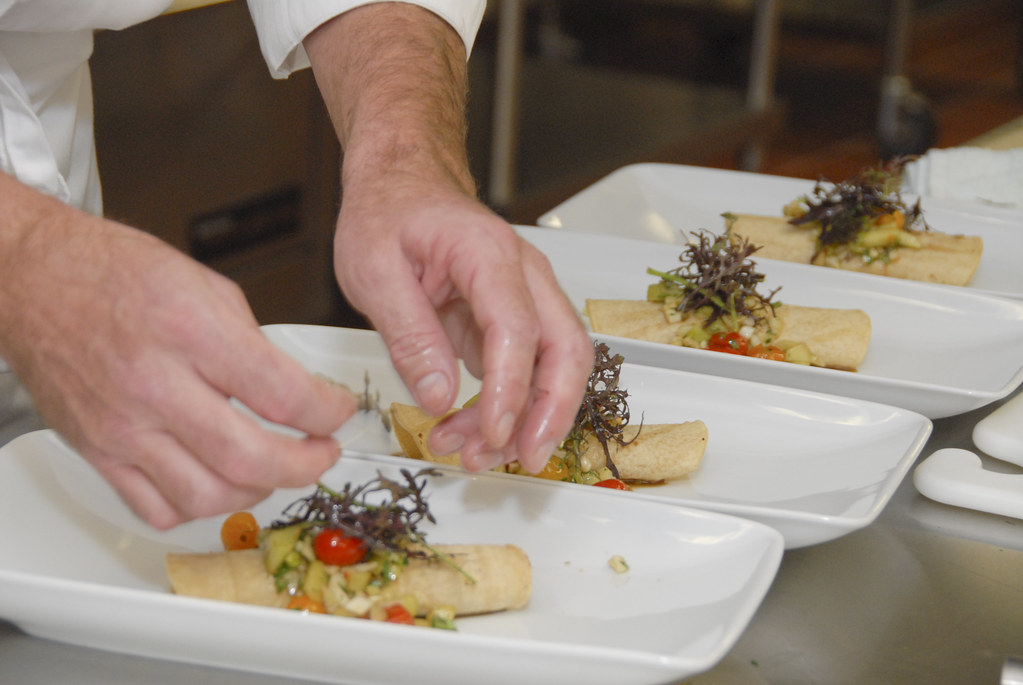Photo by Rene Asmussen from Pexels

While most of us home cooks can make an okay meal, chefs know how to take ordinary ingredients and make them something special. It’s a combination of skill, years of experience and insider tips. Here are secrets to cooking success that chefs learn over the years – and now you know them too.
If you start cooking in a cold pan the ingredients may stick or cook unevenly. Chefs advise you to read your recipe instructions to check how hot the pan needs to be. For example, scrambled eggs need a medium-low pan. Steak needs a smoking hot pan.
If you don’t preheat your oven before baking, cakes can come out burnt in some parts and undercooked in others. Gas and electric ovens take about 15 to 20 minutes to preheat, so switch the oven on 30 minutes before you need it.
It's tempting to open the oven door and check how your food is cooking. But every time you open the oven, you let out hot air. When you close the oven again, it takes time before the temperature gets back to where you want it. This can give you undercooked or unevenly cooked food. Chefs call this, "If you're looking, you're not cooking." So instead, use a kitchen timer and check about two-thirds of the way through the cooking. You can adjust from there if you need to.
You can use bananas and applesauce instead of eggs to make a vegan cake. Swap one egg for one mashed banana or 1/4 cup of applesauce.
Trained chef Arnaud Thulliez has 20 years of experience in top hotel kitchens in Europe, Asia, and the Middle East. He says, "A good set of pots and pans improve your cooking because the metal conducts heat evenly and efficiently. Cheap pans often do not. It's also worth paying for a good mixer, blender, and two to four sharp chef's knives. An all-purpose knife, a small peeling knife, a serrated bread knife, and maybe a chopper."
Next time you eat chicken, keep the bones to make restaurant-quality "superior stock." Rinse the bones and simmer with water. Add vegetable peelings and onions, if you like. Simmer for at least 4 hours over a low fire – a slow cooker is ideal for this. It's okay to add extra water. Strain and freeze broth stock in an ice cube tray. Add a few cubes to any meat-based sauce, soup, or casserole for a hit of flavor. You can also make seafood stock from prawn and crab shells.
"Acidulated water" is magic: it stops cut vegetables turning brown, like cut avocado or cut apples. Just mix a cup of water with a teaspoon of lemon juice, lime juice, or vinegar. Soak cut vegetables in this liquid or sprinkle it over the cut.
Young spinach salad is a great side dish for Arabic and Middle East recipes like Kebab with biryani rice. If your green leaves are a little droopy, fill a big bowl with cold water, add 1/2 a cup of white vinegar and a few ice cubes. Submerge lettuce, spinach, or any greens into this icy bath for about 15 minutes, and it will get crispy again.
To stop cookies spreading when you bake them, refrigerate your dough before you roll it out. The same tip works for flaky pastry. Leave dough in the freezer for 20 to 30 minutes or in the fridge for 1 to 2 hours. Chilling dough helps fat penetrate and gives sweet ingredients like sugar, rose water, and vanilla time to bloom, so you can really taste them.
We usually throw away herb stems, like parsley or sage stems, but you can save them in the freezer to add flavor to your cooking. For example, you can use parsley or dill stems in stock, or when you're cooking potatoes
When you cook pasta, some of the starch stays behind in the water. Italian mamas and top restaurants finish their spaghetti by adding a spoon of this starchy pasta water to the pan with the sauce – it adds flavor and helps the sauce coat the pasta. You can buy meat-free plant-based spaghetti bolognese for vegetarians and vegans.
You don't have to make everything from scratch. Canned or frozen ingredients can be the basis for a great meal. Try vegan Ful Medames fava bean dip served with kebab or kibbeh.
Ful medames is a popular vegan dish in the Middle East. You can make this recipe in 20 minutes with canned beans, with no cooking.
What you need
2 cans cooked fava beans
½ cup water
½ to 1 tsp salt
½ to 1 tsp ground cumin
1 to 2 big chili peppers, chopped (use a sweet chili, like jalapenos)
2 garlic cloves, chopped
Juice of 1 large lemon
Extra virgin olive oil
1 cup fresh parsley, chopped
1- 2 fresh tomatoes, chopped
How to cook
Drain canned fava beans. Put in a deep skillet or saucepan. Heat over medium-high heat with ½ cup of water. Season with salt and ground cumin. Remove from heat.
Mash canned beans medium-well. The texture can be smooth or lumpy - you choose what you like. Grind garlic and green chili in a mortar and pestle, or blitz for a few seconds in a blender. Add lemon juice. Mix into fava beans.
Top fava beans with chopped fresh parsley, chopped fresh tomatoes, and a swirl of extra virgin olive oil.